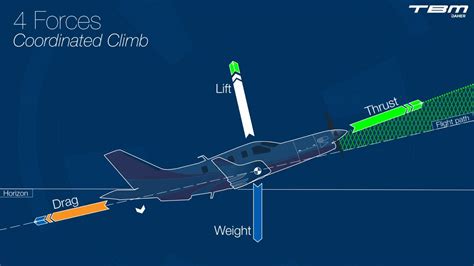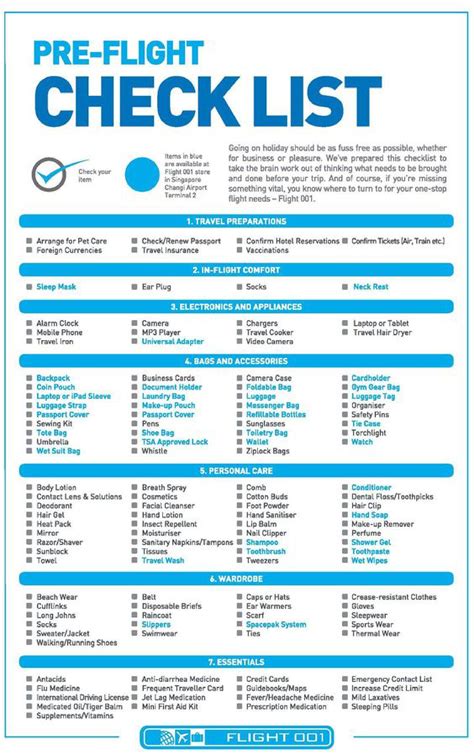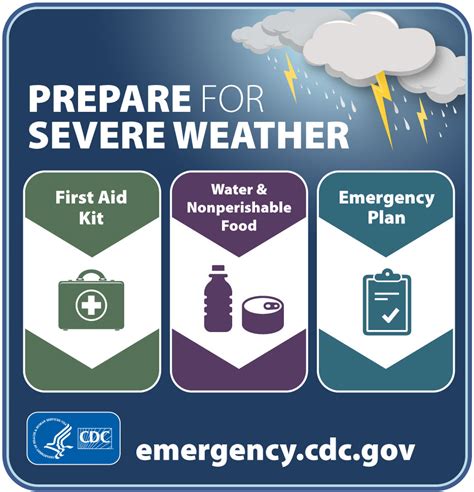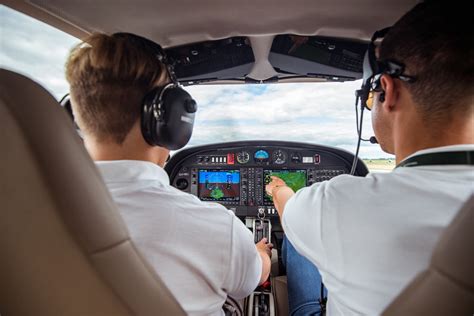Have you ever daydreamed about being the one in command, soaring through the puffy white clouds with grace and precision? The allure of piloting your own aircraft is a common fantasy that captivates the minds of many. The thought of effortlessly maneuvering through the vast expanse of the sky, embracing the freedom and power that comes with controlling a plane, can ignite a burning desire within.
Fortunately, the journey towards becoming a seasoned pilot is not an unattainable dream; it is a path that can be traversed with dedication and persistence. Whether you have a deep-rooted fascination with aviation or simply crave the thrill of taking control of an aircraft, unlocking the secrets of landing a plane is an essential skill that can transform your fantasies into reality.
Embarking on this journey requires more than a fearless spirit and a thirst for adventure. It demands a meticulous attention to detail, a deep understanding of aerodynamics, and an unwavering commitment to safety. To master the art of piloting, one must be prepared to immerse themselves in a world where precision is paramount, and every decision must be made with the utmost care.
Join us as we navigate the intricate web of flight instruction, where you will learn the indispensable techniques and acquire the necessary knowledge to safely land a plane. From gaining a comprehensive understanding of the different components of an aircraft to mastering the art of reading weather patterns, we will guide you through each crucial step of your journey towards becoming a skilled aviator.
Mastering the Basics: Understanding the Principles of Flight

In this section, we will delve into the fundamental concepts that form the basis of flight. By gaining a comprehensive understanding of these principles, you will be equipped with the knowledge necessary to navigate the skies with confidence.
1. Lift: Discover the force that allows an aircraft to overcome gravity and stay aloft. Explore the Bernoulli's principle and how the shape and angle of an aircraft's wings play a crucial role in generating lift.
2. Drag: Learn about the resistance that opposes the forward motion of an aircraft. Explore different types of drag, such as parasitic drag and induced drag, and understand how they can affect the performance and efficiency of an aircraft.
3. Thrust: Uncover the propulsion force that propels an aircraft through the air. Explore various forms of thrust, including jet engines and propellers, and understand how they work to generate the necessary forward motion.
4. Weight: Explore the force of gravity acting on an aircraft, which must be effectively managed and accounted for during flight. Understand the factors that influence an aircraft's weight, such as fuel, cargo, and passengers.
Throughout this section, we will provide clear explanations and illustrations to help you grasp these fundamental principles. Understanding the physics of flight will not only enhance your ability to land a plane, but it will also lay a solid foundation for further advancement in aviation.
- Explore the force of lift and its relationship with the shape and angle of an aircraft's wings
- Discover the different types of drag that can affect an aircraft's performance
- Uncover the various forms of thrust used to propel an aircraft through the air
- Understand the force of gravity and its influence on an aircraft's weight
Building Trust: Exploring the Functionality of Various Aircraft Systems
One of the critical aspects of aviation is establishing trust in the systems that keep an aircraft flying smoothly and safely. In this section, we will delve into the intricacies of different aircraft systems, understanding their functions and the role they play in ensuring a secure flight experience. By familiarizing ourselves with these systems, we can build confidence and develop a deeper appreciation for the engineering behind an airplane's operation.
- Flight Control Systems: At the core of any aircraft's maneuverability are the flight control systems. These complex mechanisms enable pilots to direct the aircraft's attitude, speed, and altitude, providing the necessary control during takeoff, landing, and mid-flight adjustments. Understanding the different components of these systems, such as ailerons, elevators, and rudders, allows us to comprehend how pilots navigate and maintain stability in the sky.
- Navigation Systems: Central to the safety and efficiency of air travel, navigation systems facilitate accurate route planning, precise positioning, and seamless communication between aircraft and air traffic control. From traditional methods like maps and compasses to modern advancements like GPS and inertial navigation systems, exploring the various tools utilized in navigation enlightens us about the intricacies of ensuring on-time arrivals and avoiding potential hazards.
- Engine Systems: The power behind an aircraft lies in its engines. The intricate combination of fuel delivery, combustion, and thrust generation allows airplanes to soar through the skies. By breaking down the components and processes of engine systems, such as turbofans and jet propulsion, we can grasp how aviation engineers harness the potential of engines to propel the aircraft forward and provide the necessary thrust for a safe and efficient flight.
- Electrical Systems: Electricity is the lifeblood of modern aircraft, powering critical functions such as communication, lighting, navigation, and instrumentation. An extensive network of wiring, generators, batteries, and control units ensures the continuous and reliable supply of electricity throughout the airplane. Understanding the complexities of these electrical systems instills confidence in the aviation industry's efforts to maintain a robust and resilient electrical infrastructure.
- Hydraulic Systems: Behind many of the aircraft's mechanical movements lie hydraulic systems. From landing gear deployment to flight control surface actuation, hydraulic systems utilize fluid pressure to efficiently transfer force. Delving into the inner workings of hydraulic systems allows us to appreciate the engineering that enables the seamless operation of essential functions like braking, steering, and emergency services in various circumstances.
By acquainting ourselves with the diverse systems that make up an aircraft, we can develop a sense of trust and admiration for the expertise and ingenuity involved in designing and maintaining these complex machines. Gaining knowledge about these systems not only enhances our understanding of aviation but also fosters a deeper appreciation for the diligence and precision required to ensure the safety and reliability of air travel.
Preparation is Key: Creating a Landing Checklist

Effective preparation is vital for successfully landing an aircraft. By developing a comprehensive landing checklist, pilots can ensure that they are equipped with the necessary knowledge and tools to safely bring the plane down.
A landing checklist acts as a step-by-step guide that pilots can follow during the landing process. It serves as a reminder for key procedures and helps to ensure that no critical steps are overlooked.
- Pre-landing Preparation: Before beginning the descent, pilots should assess weather conditions, review runway information, and communicate with air traffic control.
- Approach: The approach checklist consists of tasks such as configuring the aircraft for landing, briefing the approach procedure, and conducting appropriate system checks.
- Final Approach: This section focuses on verifying landing gear extension, aligning with the runway centerline, and ensuring proper speed and altitude control.
- Touchdown and Rollout: Pilots should ensure that they maintain the correct approach speed, make a smooth touchdown, and apply appropriate braking techniques to safely slow down the aircraft during rollout.
- After-Landing Procedures: Once the aircraft has come to a complete stop, pilots must engage in various post-landing tasks such as retracting flaps, recording necessary information, and securing the aircraft.
Creating a landing checklist requires careful consideration of the specific procedures and actions that need to be executed during each phase of the landing process. It should be regularly reviewed, updated, and adhered to by pilots to ensure a safe and controlled landing every time.
Stay Focused: Managing Distractions and Maintaining Concentration
One of the key skills a pilot must possess is the ability to stay focused and maintain concentration during critical moments in the cockpit. Just like any other demanding profession, pilots often face distractions that can jeopardize the safety and effectiveness of their flights. In this section, we will explore various strategies and techniques that can help pilots manage distractions and improve their ability to stay focused in the air.
Identify and Minimize External Distractions
- Avoid engaging in unnecessary conversations with passengers or crew members during critical flight phases.
- Ensure that all electronic devices on board are set to airplane mode to prevent incoming calls, messages, or notifications from disrupting concentration.
- Minimize environmental distractions such as excessive noise or clutter in the cockpit.
Develop Effective Time Management Skills
- Create a structured flight plan with specific time allocations for each phase of the journey to stay on track.
- Prioritize tasks and allocate adequate time for each based on their level of importance and urgency.
- Practice efficient multitasking techniques to handle simultaneous responsibilities without compromising concentration.
Implement Mental Focus Techniques
- Utilize deep breathing exercises or meditation practices to enhance mental clarity and reduce stress.
- Engage in regular physical exercise to improve overall cognitive functions and maintain mental alertness.
- Develop mental checklists or mnemonics to help recall vital information and maintain focus in high-pressure situations.
Stay Physically Comfortable
- Ensure proper seating posture and make necessary adjustments to prevent discomfort or distractions during the flight.
- Stay hydrated and maintain a balanced diet to support optimal brain function.
- Take regular breaks to stretch and avoid physical discomfort that can lead to distraction.
By implementing these strategies and techniques, pilots can enhance their ability to manage distractions and maintain concentration throughout their flights. It is important to remember that staying focused is crucial for the safety and success of every flight journey.
Stay Calm: Dealing with Emergencies and Adverse Weather Conditions

Remaining composed and composed under pressure is crucial when confronted with unexpected situations during aviation. In this section, we will explore effective strategies for handling emergencies and navigating through adverse weather conditions with confidence and composure.
Emergency Preparedness:
In times of crisis, it is essential to have a clear understanding of emergency protocols and procedures. By familiarizing yourself with emergency checklists and practicing simulations, you can develop the necessary confidence and competence to handle unexpected events effectively.
Effective Decision-Making:
When faced with emergencies, the ability to make sound decisions swiftly can mean the difference between a safe landing and a catastrophic outcome. We will discuss techniques such as assessing the situation, gathering information, and prioritizing actions to ensure the best possible outcome in high-pressure situations.
Managing Adverse Weather:
Adverse weather conditions can pose significant challenges during a flight. By understanding meteorological concepts and learning how to interpret weather reports, pilots can make informed choices and effectively minimize the risks associated with adverse weather. We will explore techniques for avoiding or navigating through thunderstorms, icing conditions, and strong winds.
Communication and Coordination:
In times of emergencies or adverse weather, clear and effective communication is crucial for maintaining control and ensuring the safety of all onboard. We will discuss best practices for communication between the pilot, the control tower, and other relevant parties, as well as how to effectively delegate tasks and coordinate efforts in challenging circumstances.
Stress Management:
Handling emergencies and adverse weather can be highly stressful. Learning how to manage stress and anxiety effectively is essential for maintaining a clear mind and making rational decisions in high-pressure situations. We will explore techniques such as deep breathing exercises, visualization, and practical strategies for reducing stress levels.
By understanding how to stay calm and composed during emergencies and adverse weather conditions, pilots can enhance their ability to handle unexpected situations and ensure the safety of themselves, their passengers, and their aircraft.
Perfecting Skills: Simulating Landing Scenarios on Flight Simulators
In order to enhance one's proficiency in landing an aircraft, practice becomes crucial. While dreams of controlling a plane may seem distant, the utilization of flight simulators brings the opportunity to learn and master landing techniques within reach.
Simulation software provides a realistic environment for aspiring pilots to experience various landing scenarios, preparing them for real-life challenges. These virtual simulators offer a multitude of features and scenarios, allowing users to practice landing approaches in different weather conditions, flight conditions, and even at various airports around the world.
Flight simulators enable users to develop their understanding and application of landing procedures, such as configuring the flaps, adjusting the throttle, and coordinating with air traffic control. By immersing oneself in these simulated environments, individuals can refine their decision-making skills, improve reaction times, and build muscle memory for smooth landings.
Furthermore, flight simulators provide an opportunity for pilots to practice in challenging situations, such as engine failures or adverse weather conditions. These simulations allow them to test their problem-solving abilities, decision-making skills, and emergency procedures, ensuring they are well-prepared to handle unexpected events during real flights.
Another advantage of simulators is the ability to offer instant feedback on performance. Users can review their landing techniques, analyze flight parameters, and identify areas for improvement. This iterative process allows pilots to refine their skills, adjust their approach, and eventually achieve consistently successful landings.
Ultimately, practicing landing scenarios on flight simulators serves as a valuable tool for pilots aiming to enhance their competency in the aviation world. By utilizing these simulated environments and taking advantage of the realistic challenges they offer, individuals can develop the necessary skills and confidence to safely land a plane in any given situation.
A Helping Hand: Seeking Guidance from Experienced Pilots and Instructors

When pursuing the aspiration of confidently operating an aircraft, one can greatly benefit from the support and insights of seasoned aviators and instructors. These individuals possess the knowledge, expertise, and practical experience necessary to guide aspiring pilots on their path to mastery.
Connecting with experienced pilots and instructors can provide invaluable assistance in understanding the intricacies of piloting an aircraft. Their mentorship and advice help aspiring pilots navigate through the complexities of flight operations, decision-making processes, and emergency situations.
Seeking guidance from these knowledgeable professionals not only facilitates the acquisition of vital technical skills but also instills a strong sense of confidence and reassurance in aspiring aviators. This personalized mentorship can provide invaluable motivation and encouragement throughout the learning journey.
Furthermore, the experience and perspective shared by experienced pilots and instructors contribute to a comprehensive understanding of the aviation industry. They can provide insights on various career paths, best practices for professional development, and opportunities for growth within the field.
By seeking the support and guidance of experienced pilots and instructors, aspiring aviators can accelerate their progress, gain a deeper understanding of the multifaceted aspects of aviation, and ultimately, cultivate the skills necessary to successfully navigate the skies.
Mastering the Approach: Perfecting Your Descent and Aligning with the Runway
In this section, we will delve into the art of mastering the approach phase of a flight, focusing on the crucial aspects of perfecting your descent and aligning with the runway. As a pilot, achieving a smooth and accurate descent, along with proper alignment with the runway, is essential for a safe and controlled landing.
During the approach phase, pilots need to carefully manage their descent rate and altitude to ensure a controlled and stable approach. By employing various techniques, such as adjusting the throttle, controlling the pitch, and monitoring the airspeed, pilots can execute a precise descent that allows for a smooth transition towards the runway.
Proper alignment with the runway is equally important during the approach. Pilots must actively keep track of the runway's position and establish a suitable approach path that aligns with the runway's centerline. By effectively utilizing navigation instruments, such as the heading indicator and the localizer, pilots can ensure accurate alignment and minimize the risk of veering off course.
Additionally, factors such as wind speed and direction play a crucial role in the approach phase. Pilots must adapt their approach technique to account for crosswinds, gusts, and turbulence, as these variables can significantly affect the aircraft's alignment and stability during the descent. By employing techniques like crabbing or using crosswind correction angles, pilots can counteract these effects and maintain a stable approach towards the runway.
Furthermore, maintaining proper situational awareness is essential during the approach phase. Pilots need to constantly monitor their altitude, airspeed, and descent rate, while also staying aware of any changes in environmental conditions. By staying alert and proactive, pilots can make timely adjustments and ensure a controlled and precise approach.
In summary, mastering the approach phase requires pilots to perfect their descent technique and align accurately with the runway. By employing various strategies, adapting to environmental factors, and maintaining situational awareness, pilots can achieve a safe and controlled landing, showcasing their skills and expertise in the art of aviation.
Gaining Confidence: Enhancing Your Landing Proficiency through Practiced Repetition

Aspire to master the art of landing an aircraft? Boosting self-assurance and refining your landing technique can be achieved through consistent repetition. Repeatedly practising and honing your skills not only enhances your confidence but also helps you develop the muscle memory necessary to ensure a safe and seamless touchdown.
Regular repetition gradually builds familiarity and proficiency in landing maneuvers. The more frequently you experience and practice landing procedures, the more natural the process becomes. By repeatedly exposing yourself to different landing scenarios and refining your approach techniques, you can develop a deep understanding of the intricacies involved and proactively anticipate any potential challenges.
Engaging in repetitive landing drills enhances muscle memory and reflexes, allowing for precise control during critical moments. Through rigorous practice, you can fine-tune your ability to make split-second decisions and execute smooth landings even in challenging conditions. Consistent repetition also aids in building a sense of composure and resilience, enabling you to remain calm and focused when unexpected variables arise.
Repetition builds confidence. As you accumulate successful landings through regular practice, your confidence in your own abilities grows. This burgeoning self-assurance translates into improved decision-making and a more assured approach during landings. With an increased level of confidence, you can navigate difficult situations with greater ease, harnessing your skills to swiftly adapt to changing circumstances.
In conclusion, repetition plays a pivotal role in gaining confidence and fine-tuning your landing skills. By embracing regular practice and exposing yourself to a variety of landing scenarios, you can enhance your muscle memory, reflexes, and decision-making abilities. The results of disciplined repetition extend beyond technical proficiency - it empowers you to maintain composure, adapt to dynamic situations, and perform safe and successful landings consistently.
Achieving Your Ambition: Striving Towards Acquiring a Pilot License
The desire to explore the skies and command an aircraft is a goal that captivates many individuals. If you have ever envisioned yourself in the pilot's seat, guiding a plane through the clouds, then obtaining a pilot license is the crucial first step towards turning that vision into reality.
Embarking on the journey to obtain a pilot license may seem daunting at first, but with proper dedication, determination, and a clear roadmap, you can successfully navigate the process. This section will guide you through the essential steps required to fulfill your dream of becoming a licensed pilot.
1. Research and Choose the Right Flight School
The success of your pilot license journey heavily depends on selecting the right flight school. Thoroughly researching various flight schools will enable you to find an institution that aligns with your goals, provides quality training, and has experienced instructors who can guide you through the learning process.
2. Begin with Ground School
Ground school forms the foundation of your aviation knowledge. This phase involves studying topics such as aerodynamics, weather patterns, aircraft systems, and navigation. Comprehensive theoretical learning through ground school is crucial to understanding the principles and regulations that govern aviation.
3. Flight Training: From the Cockpit to the Skies
Once you have acquired the basic theoretical knowledge, it's time to take to the skies. Flight training involves hands-on practice under the supervision of a certified flight instructor. This invaluable experience will familiarize you with pre-flight checks, takeoffs, landing procedures, in-flight maneuvers, and emergency protocols.
4. Solo Flight: A Major Milestone
Reaching the stage where you are ready to fly solo is a significant achievement in your journey to obtaining a pilot license. After thorough training and practice, your flight instructor will assess your skills and knowledge before giving you the opportunity to take the controls of an aircraft on your own.
5. Finalize Your License: Written and Practical Examinations
Before you can proudly call yourself a licensed pilot, you must demonstrate your understanding and proficiency through written and practical examinations. The written test assesses your knowledge while the practical examination evaluates your flying skills. Successfully passing both examinations is essential to obtaining your pilot license.
Taking these necessary steps and dedicating time, effort, and financial resources will bring you closer to accomplishing your ambition of becoming a licensed pilot. Remember, the journey may be challenging, but the rewards and sense of achievement that await you in the skies are beyond measure.
FAQ
Can anyone learn how to land a plane?
Yes, with proper training and practice, anyone can learn how to land a plane. It requires dedication, learning the necessary skills, and obtaining a pilot's license.
What are the basic steps involved in landing a plane?
The basic steps involved in landing a plane include descending from the cruising altitude, aligning the aircraft with the runway, reducing speed, flaring for a smooth touchdown, and applying brakes to bring the plane to a stop.
How long does it take to learn how to land a plane?
The duration to learn how to land a plane can vary depending on several factors such as the individual's aptitude, the frequency of training, and the type of aircraft. On average, it can take several months to a year to become proficient in landing a plane.
What are some challenges pilots face while landing a plane?
Pilots face various challenges while landing a plane, such as adverse weather conditions, crosswinds, instrument failures, crowded airspace, and dealing with emergencies. It requires sharp decision-making skills, adaptability, and the ability to keep calm under pressure.
What are the safety measures pilots must follow during a landing?
Pilots must follow several safety measures during a landing, including conducting pre-landing checks, communicating with air traffic control, maintaining a safe speed and altitude, using appropriate landing techniques, and always being prepared for a go-around if the landing conditions are not optimal.
What are the basic requirements to land a plane?
Basic requirements to land a plane include having a valid pilot's license, sufficient flight hours, and training in various maneuvers such as approach and landing techniques. Additionally, it is important to have a good understanding of navigation, communication, and aircraft systems.



